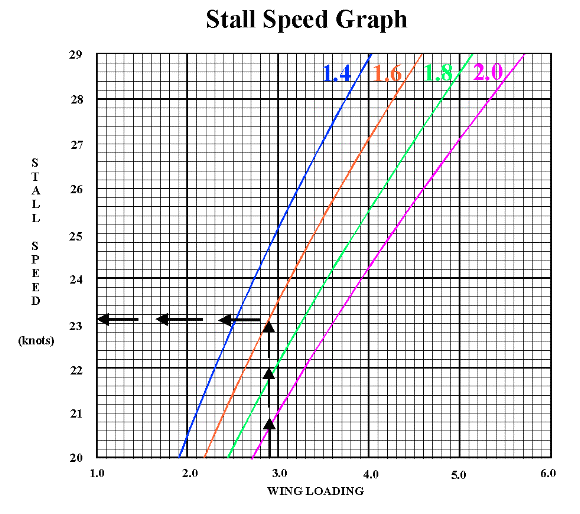APPENDIX 2. DETERMINING POWER-OFF STALL SPEED OF ULTRALIGHTS
Example: Empty weight ..... 240 lbs.
Pilot weight ..... 170 lbs.
Fuel weight ...... 30 lbs.
-----
440 lbs.
STEP TWO - Divide the total weight by the total wing area to obtain the wing loading
of the vehicle.
Example: Weight 440
--------- = ----- = 2.9 (Wing Loading)
Wing Area 151
Lift Factor Wing Profile Wing Description
1.4 

 Single/double surface with camber of less
than 7 percent (see Appendix 3) and all
symmetrical and semi symmetrical airfoils
without flaps, regardless of camber.
1.6
Single/double surface with camber of less
than 7 percent (see Appendix 3) and all
symmetrical and semi symmetrical airfoils
without flaps, regardless of camber.
1.6  Relatively flat-bottom, double surface
wings with camber of 7 percent or more.
1.8
Relatively flat-bottom, double surface
wings with camber of 7 percent or more.
1.8 

 Single surface with camber of 7 percent
or more or double surface with flaps
extending up to 50 percent of the total
wingspan.
2.0 Double surface with flaps extending
more than 50 percent of total wingspan.
Single surface with camber of 7 percent
or more or double surface with flaps
extending up to 50 percent of the total
wingspan.
2.0 Double surface with flaps extending
more than 50 percent of total wingspan.

 Back to the Ultralight home page
Back to the Ultralight home page